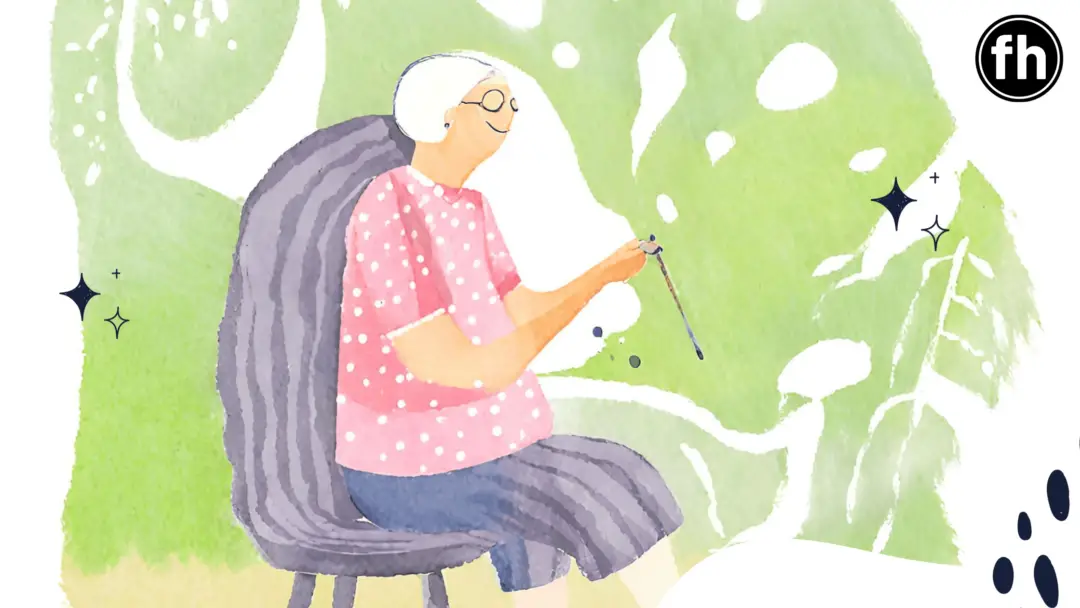India, a land rich in tradition and diversity, offers an array of hobbies that are deeply intertwined with its culture and history.
Engaging in activities such as traditional pottery, classical dance, and various forms of art not only allows you to explore Indian culture but also provides a soulful connection to the country’s rich heritage.
Whether you’re visiting Mumbai’s vibrant handicraft markets or trying your hand at classic Indian cuisine, you’ll find plenty of ways to immerse yourself in local traditions.

Many people enjoy activities like urban exploration, which lets you discover historic landmarks and hidden gems in Indian cities. It’s a perfect way to blend adventure with learning about India’s architectural and historical narrative.
On a more social level, hosting or joining game nights with popular board games can be a fantastic way to connect with both neighbors and new friends, reflecting India’s strong community spirit.

From baking at home to joining local craft clubs, you can pick up creative hobbies that were especially popular during recent quarantines.
These activities, ranging from bread-making to intricate art projects, allow you to enjoy relaxation and creativity, capturing the essence of Indian leisure pursuits.
The Cultural Tapestry of India

India’s cultural richness stems from its long history, diverse religions, and myriad festivals. This vibrant tapestry is reflected in the various hobbies and leisure activities that have evolved over millennia, shaping unique communal and individual experiences.
Historical Roots of Indian Hobbies
India’s hobbies have ancient origins, with many activities dating back thousands of years.
Yoga, for instance, has been practiced for over 5,000 years and remains a cornerstone of physical and mental well-being.
Classical dance forms like Bharatanatyam and Kathak have roots in ancient temple traditions, transforming into sophisticated art forms performed globally.
Traditional sports such as kabaddi and mallakhamba showcase India’s penchant for physical agility and teamwork.
These activities have been an essential part of village festivals and community gatherings, fostering a sense of unity and collective enjoyment.
Understanding these historical roots helps you appreciate the depth and continuity of Indian hobbies, many of which retain their traditional elements even today.
Influence of Religion and Festivals on Leisure Activities
Religion and festivals play a significant role in shaping Indian hobbies.
Major Hindu festivals such as Diwali and Holi are not just religious events but also occasions for various forms of entertainment and leisure.
Diwali, the festival of lights, often includes activities like rangoli-making and firecracker games, while Holi, the festival of colors, features joyous celebrations including music, dance, and color play.
Islamic festivals like Eid see families engaging in culinary activities, sharing traditional recipes that have been passed down through generations.
Sikh and Christian festivals bring communities together for collective worship and festive activities such as community meals and carol singing.
These events are integral to India’s cultural fabric, offering you a glimpse into the diverse leisure practices tied to religious traditions.
Language and Communication in Cultural Practices
India’s linguistic diversity significantly influences its cultural practices and hobbies.
Folk music and storytelling, which vary widely across regions, are popular hobbies that reflect linguistic diversity.
For instance, the traditional puppet shows of Rajasthan are performed in Marwari, showcasing local legends and folklore.
Literary activities also hold a special place, with each language contributing to India’s rich corpus of poetry, novels, and plays.
Language-based clubs and gatherings are common, allowing you to immerse yourself in regional cultures.
These practices not only preserve linguistic heritage but also foster a sense of community and cultural pride.
Traditional Hobbies: A Mirror to Indian Heritage

India’s traditional hobbies reflect a rich cultural heritage, encompassing classical music and dance forms, intricate painting and calligraphy, and crafts and textiles. These hobbies are more than pastimes; they are pillars of cultural expression and historical continuity.
Classical Music and Dance Forms
Classical music and dance in India are revered for their historical depth and cultural significance.
Indian classical music, with its two main traditions—Hindustani and Carnatic—offers intricate compositions and expressions.
Dance forms like Kathak, Bharatanatyam, and Odissi are not just performances but narrations of stories and emotions through graceful movements and gestures.
Each dance form has its origin in ancient temples and royal courts, embedded with spiritual and historical contexts. Learning these arts often requires years of dedicated practice, underscoring their complexity and cultural heft.
The Rich Palette of Indian Painting and Calligraphy
Indian painting and calligraphy are diverse, including traditional styles such as Madhubani, Warli, and Mughal miniature paintings.
Calligraphy has also held a special place, particularly in Islamic and Mughal art, where intricate designs and patterns were used to adorn manuscripts and architecture.
Madhubani painting, originating from Bihar, uses fingers, twigs, brushes, and matchsticks, and often includes vibrant colors and mythology-inspired themes.
Warli painting, from Maharashtra, utilizes white paint on mud walls to depict daily life and rituals.
These traditional arts not only represent artistic skill but also serve to document history and heritage.
Crafts and Textiles: Weaving History into Art
Crafts and textiles in India are a tapestry of historical narratives and artisanal expertise.
Mirror work, for instance, can be traced back to 13th century Persia and became prominent during the Mughal era. The mirrors used in textiles aim to trap or blind the evil eye, blending cultural belief with aesthetic beauty.
Regions like Gujarat and Rajasthan are famous for their intricate embroidery, often incorporating mirrors, beads, and vibrant threads.
Other traditional crafts include weaving, pottery, and block printing, each with distinct regional techniques and styles.
These crafts offer a palpable connection to Indian history and cultural identity, making them invaluable in understanding Indian heritage.
Modern Pastimes: Bollywood, Gaming, and Beyond

India today embraces diverse modern pastimes, blending traditional and contemporary interests. Key areas include Bollywood as a cultural icon, the rise of digital gaming, and the unifying passion for cricket.
The Bollywood Phenomenon
Bollywood stands as a colossal force in Indian entertainment. Producing hundreds of movies annually, it is celebrated for its diverse genres and compelling narratives. You will find that Bollywood influences fashion, music, and even social norms in India.
The Hindi film industry has garnered global recognition, with stars like Shah Rukh Khan and Priyanka Chopra commanding international fame.
Box office hits often feature elaborate song and dance sequences, which are integral to the Bollywood experience.
Digital Diversion: Gaming and Online Platforms
Online gaming has surged in popularity, driven by technological advancements.
Platforms such as PubG Mobile, Garena Free Fire, and Valorant are immensely popular. According to Statista, India’s online gaming community included approximately 421 million players in 2022.
You can engage in competitive or recreational gaming, with options ranging from eSports tournaments to casual mobile games.
The rise of 5G networks and affordable smartphones has further fueled this trend, making gaming accessible across different age groups.
Sports as Leisure: Cricket and More
Cricket is not just a sport but a national obsession. The Indian Premier League (IPL) is a major event, drawing massive viewership and fanfare each season. Streets often empty when the Indian cricket team plays, reflecting the sport’s deep-rooted significance.
Kabaddi and badminton are also popular, providing various avenues for sport-based leisure.
Whether following matches on TV or engaging in local games, sports offer communal and personal enjoyment.
For quick access to cricket insights, consider exploring guides like those from Parimatch.
Healthy Living Through Traditional Disciplines

In India, traditional practices like yoga and martial arts significantly contribute to a healthy lifestyle by promoting physical fitness and mental clarity. These disciplines harness ancient wisdom to align the body and mind.
Yoga and Spirituality
Yoga, originating thousands of years ago, integrates physical postures, breathing exercises, and meditation to enhance both physical and mental well-being.
Practicing yoga can improve flexibility, build muscle strength, and reduce stress. Sessions commonly begin with asana (postures) such as Downward Dog or Warrior Pose.
Breathing techniques like pranayama help you regulate energy and achieve mental clarity.
Meditation, an essential aspect of yoga, fosters mindfulness and spiritual growth.
Indian traditions go beyond mere exercise, offering a holistic approach to health that can enhance your overall quality of life.
Martial Arts: A Blend of Physical and Mental Discipline
Indian martial arts, including Kalaripayattu and Silambam, are celebrated for their combination of physical rigor and mental discipline.
Kalaripayattu, often referred to as the mother of all martial arts, emphasizes agility, flexibility, and coordinated movements. Techniques involve complex sequences of strikes, kicks, and weaponry.
Silambam, a martial art form based on stick fighting, enhances hand-eye coordination and reflexes.
Both styles encourage a mindset of discipline and self-control. Regular practice not only fortifies physical health but also improves mental resilience and focus, making these traditions an excellent pursuit for a balanced lifestyle.
Culinary Exploration: The Spices of Life

India’s culinary landscape is rich and diverse, shaped by its ancient history and varied cultures. From the mastery involved in traditional cooking to the vibrancy of street food and tea ceremonies, the significance of spices in daily life is unmistakable.
Cooking and the Art of Indian Cuisine
Indian cuisine is a tapestry of flavors rooted in tradition and regional diversity. Each region has its own unique culinary practices, often centered around spices like turmeric, cumin, coriander, and cardamom.
Cooking in India is not just a task but an art form, intertwined with hospitality and culture.
Meals are typically prepared with meticulous care, reflecting centuries-old recipes.
You’ll find complex spice blends like garam masala, which add depth to dishes.
Cooking techniques range from slow simmering in curries to quick frying in tandoors.
Popular Dishes Include:
- Dal Tadka: Lentils with a smoky tempering.
- Butter Chicken: Creamy, spiced chicken.
- Biryani: Layered rice with aromatic spices and meat or vegetables.
Understanding these culinary traditions offers a glimpse into the history and social customs of India.
Tasting India: Street Food and Tea Ceremonies
Street food is an integral part of India’s culinary scene. It reflects regional flavors and is often a sensory explosion of tastes, colors, and aromas.
Famous street foods include golgappa, a crispy hollow sphere filled with tangy tamarind water, and pav bhaji, a spicy vegetable mash served with buttered bread.
Street vendors often prepare food fresh in front of customers, showcasing their skill and speed. This form of culinary tradition emphasizes communal eating and the shared experience of food.
Equally significant are tea (chai) ceremonies.
Chai is often brewed with a mix of spices like ginger, cardamom, and cloves.
It’s as much about the process of making it as it is about the enjoyment and hospitality it brings.
Sharing a cup of chai is a cherished social ritual.
Notable Tea Variants:
- Masala Chai: Spiced tea with milk and sugar.
- Green Tea: Often enjoyed with light snacks.
- Kashmiri Kahwa: Green tea with saffron and almonds.
The culinary landscape of India, with its emphasis on hospitality and tradition, is a fascinating area for exploration.
Check out our Huge List of Food Hobbies for more awesome food and cooking-related hobby ideas!
Literature and Creative Writing: Expressions of the Soul

Exploring literature and creative writing in India reveals a deep-rooted connection to cultural heritage and personal expression. From the vibrant stories in books to the art of storytelling, creativity flows through every aspect.
Immersive Reading: Books and Literature
India boasts a rich literary tradition that has evolved over centuries.
Rabindranath Tagore, for instance, is a distinguished figure whose works have transcended borders, offering a profound impact on art and spirituality.
By investing time in reading, you delve into diverse narratives that provide insights into various cultures and histories.
Immersing yourself in Indian literature allows you to explore different genres, including poetry, novels, and philosophical works.
The art of letter writing has also played a pivotal role, reflecting the country’s rich literary heritage through personal and historical letters.
Whether reading classics or contemporary works, literature serves as a window into the soul of India.
Penning Down Traditions: Storytelling and Romance
Storytelling in India is a cherished tradition, with folklore and romantic tales passed down through generations.
For instance, tribal literature offers a vivid account of daily traditions, bringing to life the experiences of various communities.
This form of writing captures the essence of cultural heritage and keeps it alive for future generations.
Creative writing in India often intertwines with romance, capturing deep emotions and intricate relationships.
Writers like Narayan, known for works based on tribal life, provide readers with an immersive experience of the culture and traditions of his characters.
By engaging in storytelling and romantic writing, you contribute to preserving and celebrating India’s diverse narratives and traditions.
Outdoor Adventures and Sports

India provides a wide range of outdoor activities and sports, from hiking through majestic landscapes to engaging in team sports like cricket. These popular activities not only allow you to enjoy nature but also help improve your physical condition.
Hiking and Nature: Embracing the Great Outdoors
India boasts diverse terrains that make it a hiker’s paradise.
From the rugged trails of the Himalayas to the serene Western Ghats, hiking routes cater to all levels of expertise.
You can explore unique destinations like the frozen Zanskar River for a challenging trek on ice.
Hiking also offers a chance to encounter India’s rich biodiversity.
Trails through lush forests and hills provide sightings of exotic flora and fauna, enhancing the hiking experience.
Remember, hiking isn’t just about reaching the top; it’s also about the journey, which includes stunning natural sceneries and tranquil environments.
Team Sports and Individual Pursuits
Cricket and soccer are the most popular team sports in India.
Cricket, often referred to as a religion in India, sees people from all walks of life participating.
Local cricket grounds and tournaments are numerous, and you can easily join a game to experience the excitement and camaraderie cricket offers.
Soccer is also widely played across the country.
Cities like Kolkata and Goa are famous for their passionate soccer fans and local clubs.
For individual pursuits, rock climbing is an excellent choice.
Areas like the Badami rock formations offer challenging climbs on perfect sandstone surfaces, testing both your endurance and physical condition.
Fostering Community Through Games and Entertainment

Engaging in games and performing arts offers a powerful means of socializing and fostering a sense of community. This includes the timeless fun of board and card games and the expressive world of drama and comedy.
Board Games and Card Games: Timeless Social Activities
Board games and card games have been uniting people across generations.
Games like Chess, Carrom, and Ludo are popular in India, providing a space for family bonding and friendly rivalry.
The strategic depth of games like Chess encourages respect for the intellect, while simpler games like Snakes and Ladders offer pure entertainment.
Card games such as Teen Patti and Rummy serve as social lubricants.
These games are often played during festivals or family gatherings, highlighting the importance of community and respect among players.
They provide not only entertainment but also an avenue for honing strategic thinking and quick decision-making.
Performing Arts: Drama and Comedy
The performing arts of drama and comedy are crucial for self-expression and social cohesion.
Drama allows participants to explore various facets of human emotion and narrative.
Community drama groups often tackle social issues, promoting empathy and social awareness.
These performances foster a shared sense of identity and understanding of cultural heritage.
Comedy, on the other hand, serves as a powerful tool for bringing people together.
Stand-up comedy and comedy skits break social barriers with humor.
Laughter shared in a group setting enhances camaraderie, delivering both entertainment and a collective sense of joy.
Comedy performances encourage participants to embrace vulnerability, making it a unique form of entertainment that resonates widely.
Frequently Asked Questions

India’s hobbies reflect its rich cultural heritage and diversity. From traditional practices to contemporary pastimes, these activities offer unique experiences rooted in history, art, and community.
What are some common hobbies that reflect traditional Indian culture?
Traditional Indian hobbies include yoga, classical dance forms like Bharatanatyam and Kathak, and music. These activities are deeply embedded in India’s cultural and spiritual practices.
How can someone start engaging with hobbies that are popular in India?
To start engaging with popular Indian hobbies, consider joining local clubs or online communities.
You can find yoga classes, cricket clubs, or dance workshops in many cities. Reading Indian literature can also deepen your connection to these activities.
Which hobbies are particularly favoured by women in India?
Women in India often enjoy hobbies like embroidery, cooking, and classical dance. Yoga and reading are also popular among women. Many of these activities offer a way to connect with cultural traditions and personal well-being.
Can you list various cultural activities that are integral to Indian heritage?
Integral cultural activities include yoga, classical dance forms, music, and festivals. Each activity showcases India’s artistic and spiritual traditions.
Visiting local temples, participating in festivals, and attending cultural performances also offer deep insights into Indian heritage.
How does Indian cuisine play a role in the hobbies of its people?
Cooking is a significant hobby in India, reflecting its diverse culinary traditions.
Many people take pride in preparing regional dishes, experimenting with spices, and preserving family recipes. Sharing meals is a key social activity and enhances community bonds.
Which aspects of Indian culture are most influential worldwide?
Yoga, Bollywood, and Indian cuisine are among the most influential aspects of Indian culture worldwide. Yoga promotes a holistic approach to health and well-being.
Bollywood captivates global audiences, and Indian cuisine is celebrated for its rich flavors and diversity.





